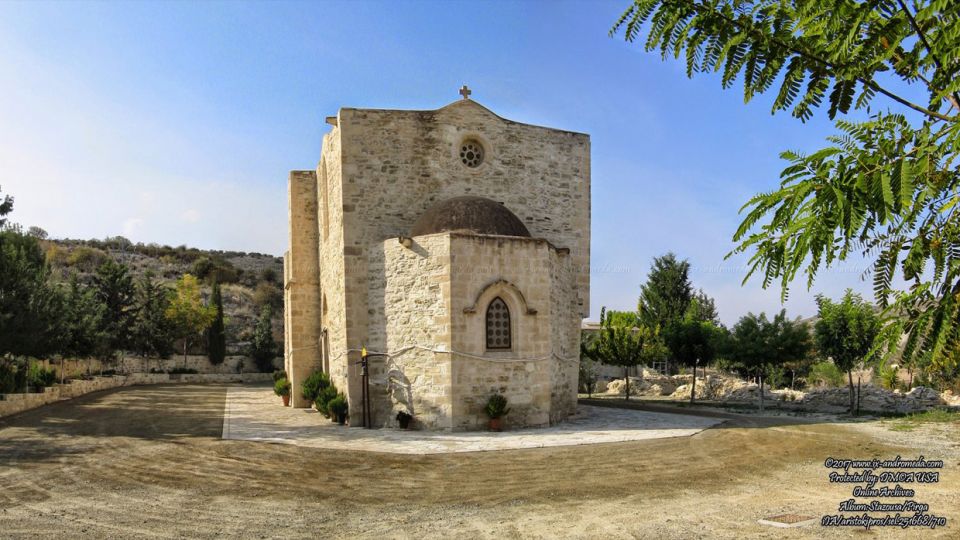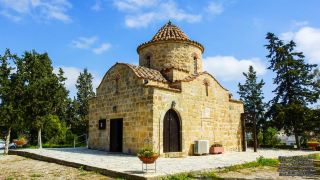On the way from Pyrga to Kavdia there is a wonderful Glebe. It is a Church dedicated to Zoodochos Pigi (Life-giving Spring), that is, Our Lady. After the miracle performed during the Latin occupation, when a woman that suffered from hemorrhage, after having asked help from Our Lady, was cured after she kissed her icon in the Church, it was renamed to “Panagia I Stazousa”.
It is a 14th century construction and it belongs to Latin Monastic Orders that staffed the monastery of the area. It has a Gothic style and looks more like a fort than like a church. On the north side there are ruins of cells and on the west there are two cells that have been completely renovated by the Department of Antiquities of Cyprus, as well as the very beautiful carved, stone built entrance. There is also a small cave with its entrance being found at a certain height. Inside there are a few icons.
On the southern external wall at a certain height from the ground there is a solar watch that even today works perfectly, even though so many centuries have gone by from its date of creation.
On the south of the Church, at a distance of a hundred metres there is holy water. This holy water was found after a miracle once again. A bombshell of the National guard had fallen in the area from the butts of Kalo chorio close by and caused a huge fire. It burned everything except from the Church of Our Lady. In a very short amount of time, at some point south of the Church a rhododendron and a bramble had appeared. Settlers of the area that visited the Church, after they dug in the spot, noticed the holy water and its pipes that lead to the adjacent Church of Timiou Prodromou that was buried under a great landslide of rocks.
The area was excavated and beautified and became accessible for believers. Panagia I Stazousa performs many miracles, as we were told by the pilgrims we met during our visit in the Church. The Church itself is found at 4 kilometres from Pyrga on your way to Klavia, on the right hand side of the road, on the shore of the tributary of the Tremithos torrent.
The whole area as well as the Church, belong to the Stavrovouni Monastery. During the Ottoman period, the monastery and the Church were used as stables, resulting to the destruction of the Church due to fires that were lit in it, so that shepherds could warm themselves. The ceiling and the walls became black. Thousands of hours of labour were needed so that the Department of Antiquities could return it to its initial state.
Today the Church is found in a green and calm environment, as it is necessary for a Greek Orthodox Church.
Watch the video of our visit:




